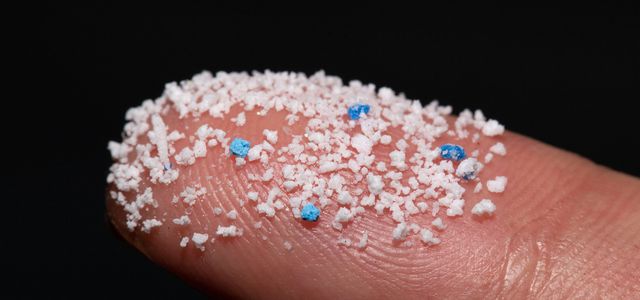
It is known that microplastics are deposited in the body. A new study now shows that the tiny particles can even get into the brain and trigger inflammation there.
The human brain protects itself via the so-called blood-brain barrier. This is a kind of filter for substances in the blood that could potentially be harmful to the brain. However, it has long been known that this barrier does not work perfectly. For example, fine dust particles from the air can get into the brain and possibly increase the risk of Alzheimer’s disease.
A new study now shows that, apparently, too Microplastics overcome the blood-brain barrier, accumulate in the brain and lead to inflammation there.
Microplastics: attack on the brain’s immune system
The researchers gave mice drinking water in which they distributed microplastic particles of various sizes. They mixed the particles with a fluorescent substance in order to be able to detect them later. After a few days, microplastic particles two micrometers or smaller began to accumulate in the mouse brain – more precisely in the so-called microglial cells.
These cells make up the immune system of the central nervous system. In the rest of the body, the white blood cells take on this task. However, they do not get through the blood-brain barrier. Apparently, microglial cells function in a similar way to the phagocytes in the “normal” immune system: They destroy pathogens.
It has long been known that a disruption of the microglial cell system can promote and aggravate neurological diseases such as Alzheimer’s, Parkinson’s or multiple sclerosis. In terms of microplastics, that doesn’t bode well.
To investigate more closely how microplastics work in microglial cells, the researchers gave: Inside microplastics in cell cultures with human microglial cells. The particles quickly accumulated in the cells and began to change them. At first, the cells grew more slowly, divided less and produced markers of inflammation, so-called cytokines. Substances that indicate increased cell death were also increasingly added. All of this suggests that microplastics are damaging the brain.
This is how you avoid microplastics

Unfortunately, microplastics cannot be completely avoided, as it is present in both ours food as well as ours Drinking water finds again. However, you can avoid other sources of microplastics. You can also help ensure that even more microplastics get into the environment.
In particular is Microplastics are often used in cosmetics contain. Since it can be hidden behind many different names, it is not always easy to spot. Apps like Codecheck, for example, help.
You can avoid the release of even more microplastics, for example, by buying as little plastic packaging as possible and avoiding cleaning cloths and clothing made of synthetic fibers. For more tips, see this article: 12 tips on what you can do against microplastics
Read more on Techzle.com:
- Incredible: 9 Microplastic Facts You Didn’t Know Before
- This is how our clothes destroy the seas
- 11 products with microplastics & alternatives WITHOUT MICROPLASTICS